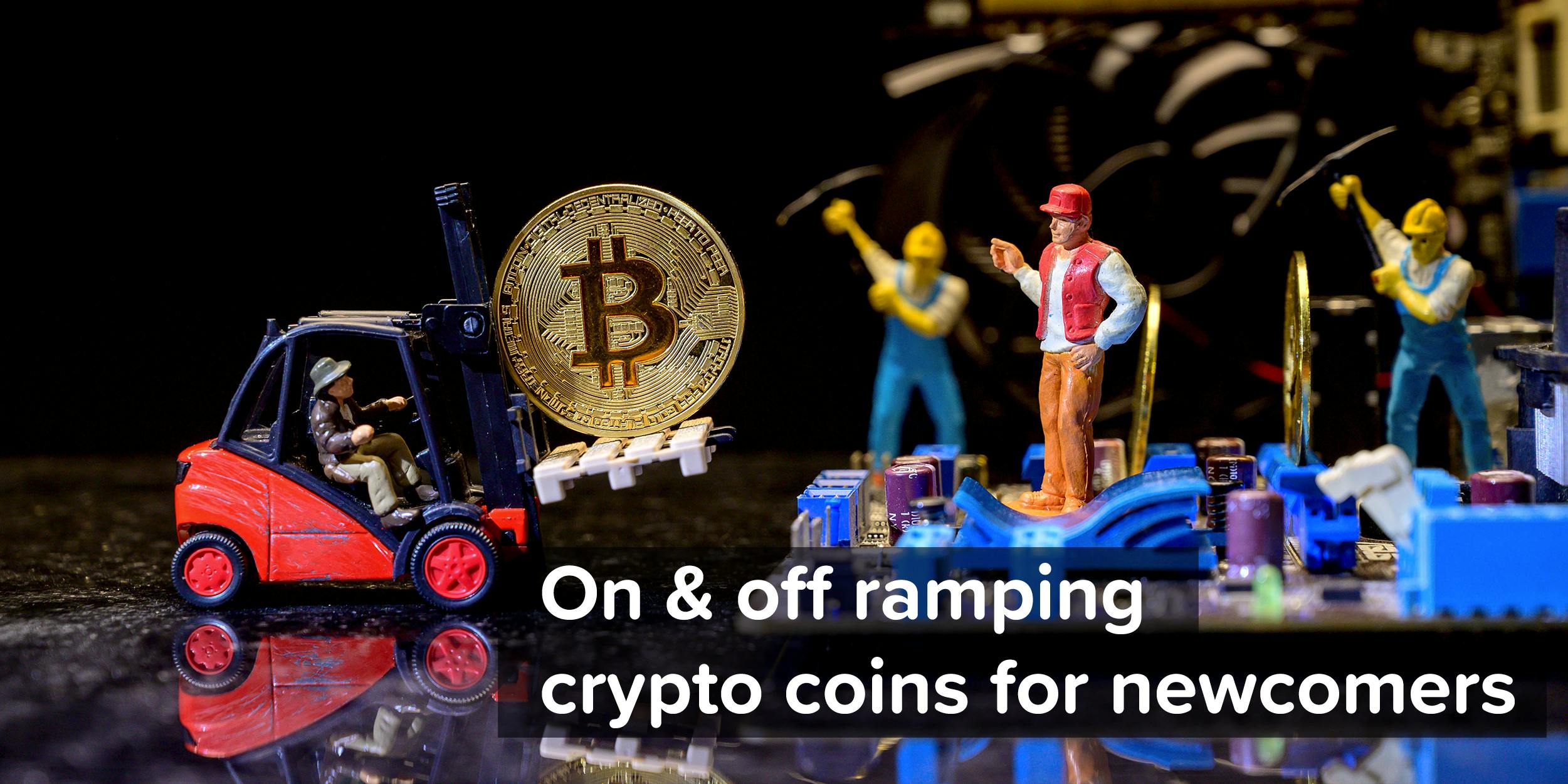On & off ramping crypto coins for newcomers

- Date
- 03/09/2023
- Written by
- Lykke
- Share
- Leave your opinion (1 reviews)
With the growing allure of cryptocurrencies, knowing the ropes of buying and selling is pivotal.
In short, on-ramping a cryptocurrency simply means converting your money into crypto coins. Off-ramping is the opposite, converting crypto coins back into fiat money (government-backed currencies).
Let's delve into a detailed explanation of how crypto on-ramp and off-ramp processes work, as well as the distinctions between on-ramp and off-ramp.
Crypto On Ramp
To start trading cryptocurrencies as an individual, you need to select a crypto exchange such as Lykke.
You then open an account, where the exchange will request personal data to comply with know your client (KYC) regulations and get these verified. A crypto account is typically secured through passwords and two-factor authentication.
To be able to start trading, you must now deposit fiat currency (euro, US dollars, Swiss francs…) into your crypto account through a bank transfer, credit or debit card payment or wire transfer. Now, you’re all set to start trading and able to buy your desired crypto coin(s). Most crypto exchanges offer numerous trading pairs such as US dollar-Bitcoin, euro-Ether, or XRP-sterling. Crypto pairs, such as Bitcoin-Ether and Bitcoin-Tether, are also available.
To never lose control of your purchased crypto coins it is key to move them from the exchange to a secure wallet. To leave them on a crypto exchange makes them vulnerable to both hackers and thieves. The Lykke exchange offers a wallet, too. To never lose access to this wallet, Lykke also offers Azobé, a secure digital asset custody solution to affluent and institutional clients. Read more about Azobé here.
This part of the crypto transaction is quite clear to most crypto newbies. The questions that arise are how to then convert the crypto profits or crypto investments back into fiat money - a transaction known as off-ramping in the cryptosphere.
Crypto Off Ramp
Off-ramping crypto involves converting digital assets into traditional fiat currencies, allowing investors to access real-world value from their cryptocurrency holdings.
To convert your crypto coins back into money, you’ll again need to select a crypto exchange. It does not necessarily need to be the one where you bought the crypto coins. If you pick a different exchange, you’ll of course first need to transfer your crypto wallet to this exchange and create an account as explained above if you’re not yet a client there.
To convert your crypto coins, you deposit the amount you want to off-ramp by moving the coins from your secure wallet to the exchange of your choice. Beware that the crypto coins up for sale need to be sent on a blockchain that is supported by the exchange or you may run the risk of losing your crypto coins.
Now, you’re ready to sell your crypto investment for the currency of your choice. There are different withdrawal options available to recoup your money, such as bank transfers or PayPal.
The on- and off-ramping of crypto coins are not free services but involve fees. The Lykke exchange does not charge for on-ramping. We only charge a small fee for off-ramping.
At this stage, investors need to beware that their crypto transactions and any potential gains made from the crypto investment, may be subject to income tax and/or capital gain tax depending on the country of residence and under which jurisdiction the crypto transaction is made.
Summary
In conclusion, understanding the nuances of crypto on-ramp and fiat on-ramp crypto, and the dynamics between on-ramp vs. off-ramp is essential for navigating the evolving landscape of cryptocurrency transactions, investments, and the seamless movement between digital and traditional financial realms. Embracing these concepts empowers individuals to harness the potential of their crypto assets while effectively off-ramping when needed, bridging the gap between the virtual and tangible financial worlds.